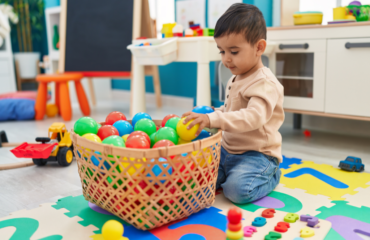
As the digital revolution revolutionizes all aspects of existence, the method of education must adapt to suit the needs of learners living in the 21st century. When parents search for “primary schools near me,” they are no longer in the search for schools that follow time-tested chalk and board practices. Instead, the direction is shifting towards smart learning environments, those that integrate technology, creativity and innovation to develop holistic child development.
What Are Smart Learning Environments?
Smart learning environments are dynamic, tech-enabled learning environments that seek to improve the learning process. They support multiple learning modes, foster collaboration and foster critical thinking, all while using tools that facilitate teachers and students to perform optimally.
A smart learning environment includes:
- Digital Classrooms: Interactive whiteboards, smart TVs and tablets
- Learning Management Systems (LMS): Systems used to track academic performance
- Adaptive Learning Software: Adaptable content depending on the pace of learning of the students
- Gamified Learning: Educational games that entertain and challenge the learner
- Collaborative Tools: Shared virtual spaces for collaborative projects
Parents looking for the best primary schools near me increasingly look for such a feature to ensure that their children are properly equipped with the necessary skills for future use.
Why Are Smart Learning Environments Important in Primary Education?
The foundation for a lifetime of learning is laid in the childhood years. It’s therefore important that these formative years be shaped in an environment that develops curiosity, imagination and critical thought. Here’s why intelligent learning is so important:
- Personalized Learning: Children are able to learn at their own pace. Intelligent software can adapt content based on individual learning needs.
- Engagement: Multimedia and interactive content keep young learners interested.
- Real-Time Feedback: LMS and other amenities provide real-time feedback, allowing teachers to adjust teaching methods.
- Skill Development: From coding to learning to digital literacy, smart classrooms prepare children for a world dominated by technology.
Searching for private primary schools near me that can offer such benefits is soon becoming the norm among parents who want to future-proof their child’s education.
Major Features That Modern Primary Schools Must Offer
1. Technology-Enabled Classrooms
Smartboards, tablets, and digital projectors are no longer luxuries but essentials. Schools like Little Scholar School Noida employ them to enhance interactive learning.
2. Integration of STEM
Science, Technology, Engineering and Mathematics (STEM) must be integrated at an early stage. Robotics kit, introductory coding modules and science laboratories encourage analytical capabilities and creativity.
3. Holistic Curriculum
Smart learning is not just technology. It includes a balanced curriculum with the inclusion of the arts, physical education and life skills. The schools have to offer:
- Visual and performing arts
- Physical education and yoga
- Value education and social-emotional learning
4. Digital Literacy Programs
Teaching students the proper usage of technology is as vital as academic education. Cyber safety, search online and content creation are integral parts.
5. Smart Assessments
Those days of blind memorization are gone. Quizzes should be diagnostic and formative in order to ascertain where students need to do better. Websites that support quizzes, surveys and instant grading are ideal.
6. Collaborative Learning Spaces
Open and flexible classroom layouts encourage teamwork. Online software like Google Workspace or Microsoft Teams allows students to work on team projects, even from home.
7. Parent Engagement Platforms
The best primary schools near you should offer live communication platforms for parents to track their child’s performance, attendance and activities.
8. Teacher Professional Development
Teachers are the backbone of any school. Proper training in emerging pedagogies and technology ensures quality delivery of education.
Benefits of Smart Learning for Students
- More Engagement: Interactivity and gamification increase student participation
- Better Retention: Visual and experiential learning methods improve memory
- Self-Paced Learning: Students can revisit lessons whenever they need to
- Improved Motivation: Real-time progress tracking and achievements instil a feeling of accomplishment
- Preparation for the Future: Digital literacy is no longer optional, it’s essential
What to Look for When Searching “Primary Schools Near Me”
Before enrolling your child in a primary school, consider these smart learning factors:
- Are classrooms equipped with modern technology?
- Does the school have a balanced academic and co-curricular program?
- Are teachers trained in using digital tools?
- Is there a system for regular parent-school communication?
- Are they intended to gauge total development?
The responses to these questions will assist you in deciding whether or not a school is actually aligned with the needs of 21st-century education.
Smart learning environments are no longer the stuff of science fiction, they’re essential. Parents looking for “primary schools near me” online must consider not just proximity but also quality and cutting-edge aspects of education offered. Little Scholar Noida is among the schools that is leading the charge with the coming together of tradition and technology to offer an education that nurtures imagination, confidence and critical thinking mindsets.
FAQs
Q1. How is a school an intelligent learning environment?
An intelligent learning environment is a place that uses digital technology, customized learning and interactive instructional methods to drive student engagement and outcomes more quickly. It helps educators with instant information and empowers students with future capabilities.
Q2. How can I find the best primary schools near me that implement smart education?
Start by searching for “primary schools near me” and reading websites. Visit school campuses, observe for digital infrastructure, meet with the faculty and ask them about their pedagogy and tech integration.
Q3. What makes a smart classroom different from a traditional classroom in primary schools?
A smart classroom integrates digital tools like interactive whiteboards, tablets and learning software to create an engaging, tech-enabled environment. Unlike traditional classrooms that rely on textbooks and blackboards, smart classrooms promote active learning through multimedia, gamification and real-time feedback.





